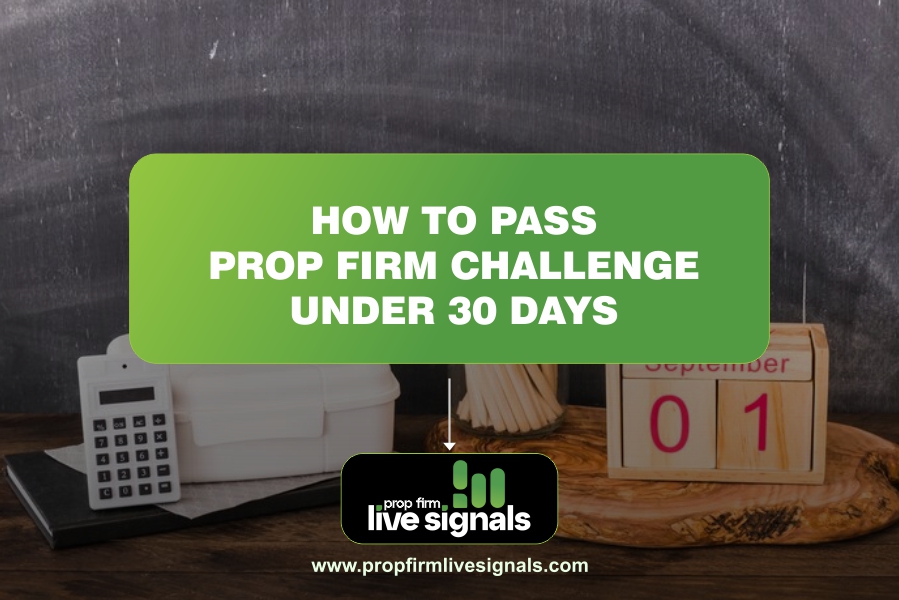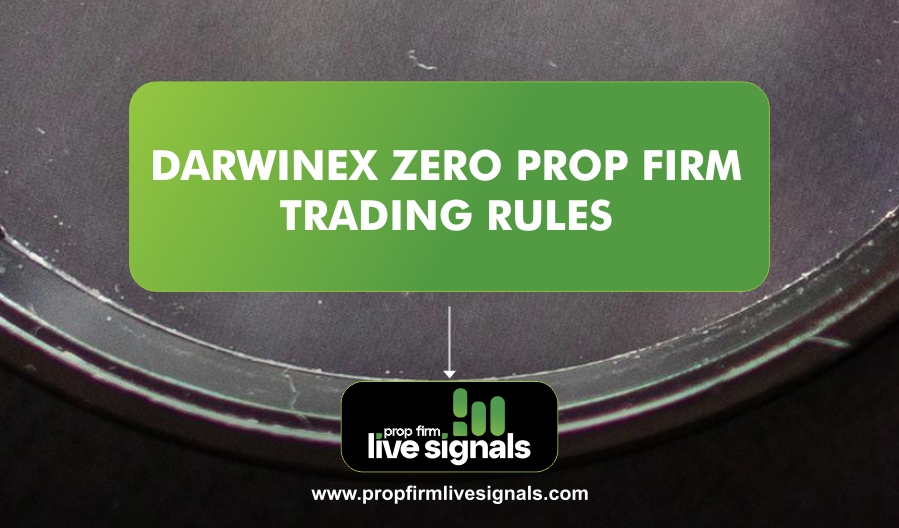However, these challenges are designed to test not just your trading skills but also your discipline, strategy, and how to manage risk effectively. In this article, we will explore effective strategies and tips to help you successfully pass a prop firm challenge in under 30 days.
Understanding the Prop Firm Challenge
Before dwelling on the strategies, it is very important to understand what a prop firm challenge essentially is and what it aims for.
These challenges are designed to assess whether the trader has what it takes in terms of skills and mindset to trade profitably and responsibly with the firm’s capital.
Typical Requirements
Prop firm challenges have particular rules and targets to meet, such as:
- Profit Target: Reach a predetermined percentage of profit on initial capital within the challenge period, such as 8-10%.
- Maximum Drawdown: Do not exceed more than a predetermined percent in losses, usually less than 5-10% of the account balance.
- Daily Loss Limit: Keep the loss within a certain daily loss limit, normally about 2-5% of the account.
- Minimum Trading Days: Trade for a minimum number of days to ensure consistent performance (for example, 10-15 trading days).
Setting Up Your Trading Plan
A trading plan will serve as your roadmap through the challenge. Here’s how to create one that fits your objectives and meets the challenge requirements.
1. Identify Your Goals
Clearly define your near-term and long-term objectives:
- Profit Target: Figure out how much you should make in a day or on a weekly basis to reach the target set for the overall challenge. Suppose your target is to make 10% profit in 30 days, which is around 0.5% per trading day.
- Risk Per Trade: Establish a strict risk-per-trade limit at 1-2% of your account balance.
- Time Commitment: First, determine how much time you can commit daily or weekly to trading.
2. Choose Your Trading Style
Your trading style should be something that fits your personality, schedule, and the structure of the challenge:
- Day Trading: Most suitable if you can dedicate a number of hours every day to the market. It allows you to take advantage of short-term opportunities and hit minimum trading days faster.
- Swing Trading: Suitable for those who prefer holding positions for multiple days. This style requires patience and thorough analysis.
- Scalping: Best for traders comfortable with high-speed decision-making and quick trades, often lasting seconds or minutes.
3. Build a Solid Trading Strategy
Your strategy should be well-tested and designed to meet the challenge’s specific rules. Incorporate these elements:
- Technical Analysis: This approach utilizes charts, patterns, and indicators, such as moving averages or RSI, to uncover trends, points of entry, and levels of exit.
- Fundamental Analysis: Keep up with news on economic events, company earnings reports, geopolitical hot spots, and anything else that may affect the financial markets.
- Risk Management Techniques: Establish definite rules for placing stop-loss orders, taking profits, and sizing positions.
Mastering Risk Management
1. Use Proper Position Sizing
The size of a trade should be determined by account balance and risk tolerance. The general rule of thumb: one should never risk more than 1-2% of his or her account in a single trade.
2. Set Stop-Loss Orders
Always use stop-loss orders. These orders will help you save your capital and also avoid emotional decision-making during trades.
3. Monitor Your Drawdown
4. Practicing Discipline and Patience
The most successful traders practice discipline and patience. Here’s how you can:
5. Stick to Your Plan
Once you have your trading plan, stick to it. Do not make impulsive decisions based on emotions or noise from the market.
6. Keep a Trading Journal
Keep a journal of your trades, entry and exit points, reasons taken, and outcome. It helps to recognize patterns in your trading behavior and points out where improvements could be made.
7. Take Breaks When Necessary
Take breaks if you start to feel frustrated or too emotional during trading sessions. This will help you unclutter your mind and avoid making impulsive decisions.
Application of Technology and Tools
Apply technology to improve your trading activities:
1. Trading Platforms
Select a dependable trading platform that allows access to superior charting tools, real-time data, and ease of use. Study its functions properly before initiating the challenge.
2. Automated Trading Systems
Consider the use of automated trading systems or algorithms that can execute trades based on predefined criteria. This doesn’t replace judgment, just helps get rid of emotional biases.
3. Economic Calendars
Keep yourself aligned with various economic calendars showing dates of events that move the markets. Knowing what’s coming up helps you adjust your strategy accordingly.
Regular Performance Analysis
Regular performance analysis is paramount to further improvement in regular intervals of time:
1. Review Your Trades
At the end of the week, go through all your trades and see what went right and what didn’t work as expected. Recognize successful patterns and mistakes to be corrected.
2. Adapt Your Strategy
Be flexible enough to change your strategy according to the performance analysis. If some techniques don’t work, never hesitate to bring changes or try another one.
Building Mental Resilience
Trading is mentally draining; hence, building mental resilience is very important:
1. Practice Mindfulness Techniques
Incorporate mindfulness practices such as meditation or deep breathing exercises into your routine. These techniques can help reduce stress and enhance focus during trading sessions.
2. Set Realistic Expectations
Understand that not every trade will be profitable, and losses are part of the process. Setting realistic expectations helps maintain motivation throughout the challenge.
Ready to Ace Your Prop Firm Challenge?
Take advantage of our LiveSignals, your go to resource for dependable, real-time trading signals, you can eliminate uncertainty from trading.
Our professionally examined setups, advice on risk management, and market analysis are all intended to help you achieve your trading objectives and confidently complete your prop firm challenge.
Sign up now and start using our LiveSignals to achieve continuous trading success!
Frequently Asked Questions (FAQs)
What is a prop firm challenge, and how long does it usually take?
- A prop firm challenge can be described as a test from proprietary trading firms to gauge the abilities, risk management, and profitability of a trader. Prop firm challenges usually run for 30 days where a trader has to achieve specific profit targets within the risk parameters.
Is it realistic to pass a prop firm challenge in less than 30 days?
- Yes, it is possible to pass in under 30 days, provided the approach is pretty disciplined, the strategies are effective, and risk management is appropriate. Some traders hit the target in less time, but this is when the market conditions are very favorable.
What are the basic needs for passing a prop firm challenge?
Key requirements often would be inclusive of:
- Profit Goal: Hitting a certain profit percentage on your account.
- Maximum Drawdown: Not exceeding the maximum allowable losses.
- Consistency Rules: Not exceeding the daily loss limits and trading for at least a certain number of days.
What trading strategies have proven to be most efficient in passing a prop firm challenge as quickly as possible?
Some of the successful ones include:
- Scalping: Placing very fast trades for small price movements.
- Swing Trading: Capturing larger trends that unfold over several days.
- Trend Following: Always trade in the direction of market momentum.
Do I need to trade daily to fulfill the Challenge Requirements?
- No, prioritize quality over quantity. Make trades only when the markets set up according to your strategy. Certain challenges may have a minimum number of trading days, so plan appropriately.
What is/are the common mistake/s a trader make/s during a prop firm challenge?
The most common errors include, but are not limited to:
- Overtrading or taking poor-quality setups.
- Disregarding risk management principles.
- Allowing your emotions to influence your trading decisions.




